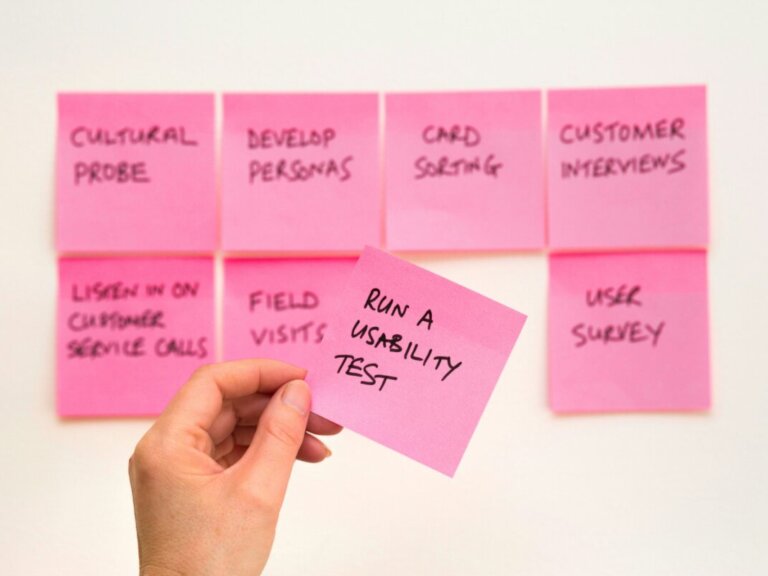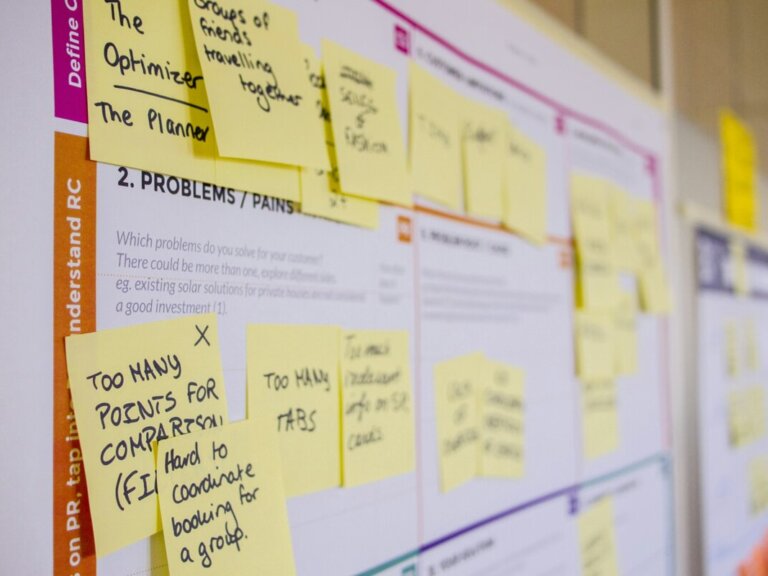
Author: Anna Schötz
· < 1 min read · 1,195 views
The Agile Scrum Roles – Easily Explained
One of the most important aspects of agile working is that it is up to the team to organize itself. To do this, everyone must know their position and the responsibilities associated with it. Therefore, here we have simply explained the roles of Scrum so that you can offer your customers the optimal added value and a valuable product.
Difference Between Scrum Roles and Position Titles
- Scrum roles are the main tasks of the members of a Scrum team.
- So the positions you have filled now can also fulfill a Scrum role.
- The roles give a definition of what needs to be done by each role in order to fulfill the core values of Scrum: self-organization, continuous improvement, and empiricism.
- In this way, it is easier for the team to organize itself and work effectively.
What are the Roles in the Scrum Team?
If you decide to implement Scrum, then it is necessary to understand how the roles differ from those in a classic project.
There are three roles; Developer, Product Owner, and Scrum Master:
- The Product Owner is responsible for the project and has the vision
- The Development Team develops the product
- The Scrum Master ensures that everything runs smoothly and that the team can work effectively
But in the following, we will go into more detail about the roles.
4 Essential Characteristics of the Scrum Team
- Self-Organized
- Team members are responsible for completing the stories themselves.
- Everyone must take responsibility for completing the tasks assigned to them.
- Cross-Functional
- Another characteristic of the agile way of working is cross-functional.
- Everyone on the team should have the ability to produce a functional product.
- Have a Vision
- The product owner works closely with the customer to have a vision that reflects the customer’s needs.
- No more than 9 Team Members
- The team should have no more than nine members, and this should cover all skills.
- A product or service can be optimally created up to this team size.
Building a Scrum Team
The basic pillars of Scrum consist of the Daily Standup, Sprint Planning, Sprint Retrospective, and the Sprint Review. Whereby not every team is suitable for Scrum, so you should first determine if it makes sense for your team.
With Scrum, basic structures for the individual roles are given to facilitate the work of the team and to distribute the tasks. Therefore, there are the following roles:
The Product Owner: Who Has the Vision and the Responsibility
- The Product Owner’s position is to determine what the product should look like and what features it needs, so he sets the direction.
- Their tasks also include collecting feedback and involving the stakeholders in the process. Since agile teams are used to being flexible and quick to respond, the product owner has to make sure that the team also delivers the most value. Therefore, they must also know and understand the customer’s wishes and requirements very well.
- In addition, the Product Backlog is filled by them and they must also make sure that everyone knows the priorities.
- This is one of the most important tasks because then everyone sets their priorities correctly, and ambiguities can be quickly cleared out of the way, leading to effective work being done on the product without destroying trust.
- If your strength lies in convincing the stakeholders and the management, then you are in the right place in the area of the Product Owner.
In summary, their tasks include:
- Defining the product backlog and formulating the tasks
- Setting priorities in the backlog and making sure everyone understands them and everything is clear to every team member
- Reviewing the value of the development team
- Communicate with stakeholders and collect feedback
The Development Team: Those Who do the Tasks
- The development team completes the tasks defined by the product owner in the backlog. It can consist of many different people from different areas. For example, designers or programmers.
- The goal is for the development team to organize itself and make its own decisions. The idea is to give the people closest to the actual work the skills to make decisions. That’s why the team also independently sets goals and which features to work on effectively first.
- So if you have the skills to create a valuable product for the customer, then you are in the right place in the development team. Because in the end, that is the most important aspect of the Scrum team.
So the specific tasks of the development team include:
- Delivery of work during the sprint
- Participation in the Daily Standup, where everyone discusses the current status of the work and can address obstacles
- Self-organization in the team
The Scrum Master: That Holds Everything Together
- In the Scrum team, the Scrum Master is responsible for ensuring that Scrum is executed well by everyone.
- This includes, for example, helping the product owner define the value that the development team should deliver or planning the work together with the team.
- The Scrum Master helps the team to work in a self-organized way and helps to remove obstacles.
If you are best at motivating and understanding the team and using the Scrum agile way of working to improve the work, then the Scrum Master role is for you.
Their key tasks include:
- Ensure transparency in the team: the Scrum Master must make sure that the team always knows what is happening.
- To do this, he creates story maps and updates Confluence pages.
- Communicate Scrum values
- Communication between all roles
More about the Scrum Master, the tasks and responsibilities can be found HERE.
Looking for Expert IT Solutions?
Subscribe to Our Newsletter for Exclusive Tips and Updates!
Stay ahead of tech challenges with expert insights delivered straight to your inbox. From solving network issues to enhancing cybersecurity and streamlining software integration, our newsletter offers practical advice and the latest IT trends. Sign up today and let us help you make technology work seamlessly for your business!



Share